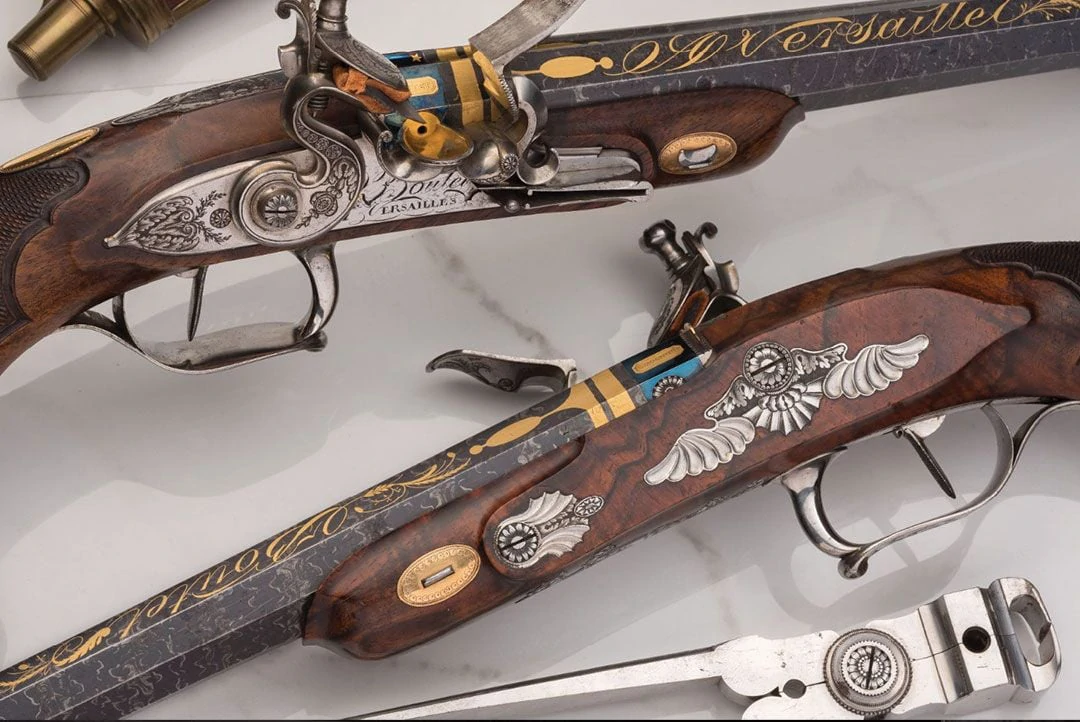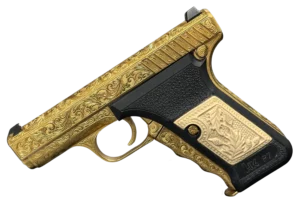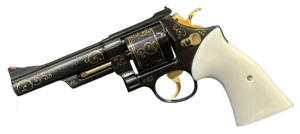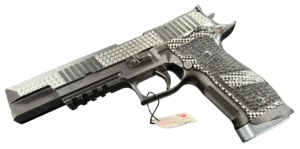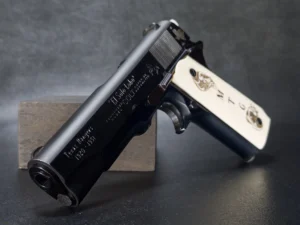Key Takeaways:
- Every antique firearm tells a story — and collecting them is about connecting with history, not just owning old weapons: You’re not just acquiring objects; you’re preserving pieces of the past. The scratches, the patina, even the faded woodgrain — they’re not flaws; they’re footprints from another time.
- Authenticity and patience matter more than speed or volume: In a world full of replicas and polished showpieces, the real gems take time to find. Rushing leads to regrets — but a slow, thoughtful approach brings rewards that resonate far beyond the price tag.
- This isn’t a solitary pursuit — it’s a living, breathing community: Collectors aren’t just hoarders of old hardware. They’re historians, storytellers, and curators. Whether you’re chatting at a gun show or trading insights online, the friendships and shared passion are just as valuable as the firearms themselves.
Welcome to one of the most rewarding obsessions you can have — collecting antique firearms. Now, if that sentence caught your attention, you’re probably someone who doesn’t just see old guns as relics. You see them as artifacts — quiet storytellers of war, peace, craftsmanship, and human ingenuity. Whether you’re already neck-deep in walnut stocks and aged bluing or you’re just starting to wonder what makes a flintlock pistol more than just a museum piece, you’re in good company.
This isn’t just about collecting weapons. It’s about holding history in your hands.
Why Are We So Drawn to Antique Firearms?
Here’s the thing — there’s something almost haunting about antique firearms. Maybe it’s the weight of the steel, the aged smell of the wood, or the thought that this exact piece once rode in a saddlebag or hung above a hearth during some long-forgotten winter. Every scratch, every patina, every detail tells a story.
From the refined curves of 18th-century dueling pistols to the rough, ready-for-anything rifles used on the American frontier, these guns aren’t just tools. They’re time capsules. And for many collectors, that emotional pull is just as strong — if not stronger — than the historical or financial value.
Where to Begin? Follow Your Gut (and the Facts)
Starting a collection can feel like standing in front of a library without knowing which book to read first. Should you go after ornate European flintlocks? Civil War-era muskets? Maybe a Colt that once had its chapter in someone’s diary?
Here’s a tip: start with what fascinates you. Maybe it’s the craftsmanship, the military history, or even the aesthetics. Let that guide your early purchases.
But—and this is important—don’t let enthusiasm override your common sense—authenticity, condition, and provenance matter. Work with established dealers or attend respected auctions. And yes, you’ll need to do your homework. But hey, that’s half the fun.
Spotting the Real Deal (Without Getting Duped)
If you’re imagining a quick way to become an expert at identifying authentic antiques, I hate to break it to you — there’s no shortcut. However, there are some key markers to watch out for.
- Manufacturer’s marks and proof stamps — These tiny symbols often hold the key to when and where a piece was made.
- Serial numbers — If present, they can be traced and verified with factory records or historical databases.
- Materials and construction techniques — Modern replicas just don’t wear or age the same way.
One more thing: don’t be too quick to dismiss a piece just because it shows wear. That old, uneven bluing or dulled brass? It could be telling you a story that a mint-condition replica never will.
Read the Fine Print: Legal Stuff You Can’t Ignore
Let’s be real — no matter how harmless a 200-year-old flintlock looks, it’s still a firearm. And while antique guns are often exempt from many modern laws, that exemption varies wildly depending on where you live.
In the United States, for example, the federal government classifies firearms manufactured before 1899 as antiques. That means they’re generally not subject to the same restrictions as modern guns. But state laws? Whole different ball game.
Europe? Even more nuanced. In the UK, some antique firearms are legally owned without a license, while others are subject to strict regulation based on their caliber or design.
Bottom line: research first, buy second. You don’t want to end up with a dream piece that’s illegal to ship, display, or even own in your area.
Caring for Your Collection (Hint: Don’t Polish It Like Grandma’s Silver)
Preserving an antique firearm isn’t about making it look new. Aggressive cleaning can destroy both historical integrity and market value. That old wood? It’s supposed to look tired. The oxidation on the barrel? It tells you this gun’s been through time.
Here’s how seasoned collectors do it:
- Use appropriate oils for wooden stocks and metal surfaces — think Renaissance Wax, not WD-40.
- Control your environment. Avoid exposure to humidity, direct sunlight, and temperature fluctuations. Gun safes with humidity control? Worth every penny.
- Skip the polish. Preserve, don’t restore — unless you’re working with a true professional who knows antique firearm restoration.
Your goal isn’t to make the piece shine. It’s to make sure it survives another hundred years.
Time Travel Through Metal and Powder
One of the joys of collecting is how it deepens your understanding of history. Each firearm reflects the era in which it originated. Flintlocks belong to a time of duels and powder horns. Percussion cap pistols signaled the rise of reliable ignition systems. And early cartridge revolvers? Well, they changed the game entirely.
Let yourself explore. Pick up a book on Napoleonic warfare or the American Westward Expansion. Study the designs of European military arms from the 1600s to the 1800s. The more you know about the people, the politics, and the places, the richer your collection becomes.
Auctions: Where the Real Treasures Live (and Breathe)
There’s nothing quite like the buzz of a live auction. The room, the gavel, the nods from seasoned collectors — it’s electric. But if you go in blind, it’s easy to get burned.
Here’s how to avoid that:
- Review the catalog ahead of time. Highlight what interests you and set a firm ceiling price.
- Attend preview days. Examine items up close. Photos can hide a lot.
- Ask for documentation. Provenance, prior ownership, expert assessments — don’t be afraid to dig.
- Know your terms. That buyer’s premium? It adds up fast.
Oh, and don’t fall in love too quickly. If you miss out, another gem is always around the corner.
Join the Conversation (and the Obsession)
Collecting can feel like a solo pursuit — until you discover the community. Gun shows, collector clubs, historical reenactment groups, online forums — they’re all brimming with folks just as obsessed as you.
Not only will you make friends who speak your language (literally — terms like “patina,” “lock mechanism,” and “furniture” will fly), but you’ll also find mentors, trading partners, and tipsters. Some of the best pieces change hands through conversations, not listings.
And here’s a little secret: experienced collectors love sharing what they know — if you ask the right questions.
Final Thoughts: More Than Just Metal and Wood
Collecting antique firearms isn’t about stockpiling old guns. It’s about building a personal museum, one that reflects your curiosity, your values, and your connection to history.
You’re preserving the past — not just for yourself, but for others who’ll someday marvel at what you’ve gathered. You’re not just a collector. You’re a steward.
So take your time. Stay curious. Ask questions. And when that one special piece finally ends up in your hands — the one that makes your heart skip — you’ll know precisely why this journey was worth every second.
Happy collecting.
Frequently Asked Questions
That depends a bit on where you are. In the United States, federal law typically considers any gun manufactured before 1899 to be an antique. But don’t stop there — some states and other countries have stricter (or looser) definitions. Always check local laws before you buy, even if the gun looks like it came from Napoleon’s nightstand.
Good question — and one every collector should ask. Start with the basics: look for original markings, such as proof stamps, serial numbers, or the maker’s signature. Study how the metal has aged. Real antique finishes tell a quiet story; modern replicas usually shout “factory fresh.” When in doubt, consult a trusted expert or bring it to a reputable auction house for assessment.
In many places, yes — but tread carefully. Antique firearms often fall into a legal gray zone. Federal U.S. law might say one thing, but your state or country might say something else entirely. And don’t assume “old” equals “unregulated.” It doesn’t. Always double-check with current local and national firearm laws before making a purchase.
Careful here — less is more. Over-cleaning can wipe away the very history that gives the firearm its soul (and value). Skip the polish. Use soft cloths, proper oils, and waxes designed for antique metal and wood. And unless you know what you’re doing, avoid full restorations. Leave that to professionals with a background in historical preservation.
Think stable, dry, and out of direct sunlight. Fluctuations in humidity or temperature can do severe long-term damage. A gun safe with climate control is ideal. If you’re displaying them, ensure they’re kept away from vents, windows, and areas where kids or curious hands might roam. They’re not just artifacts — they’re responsibilities.


